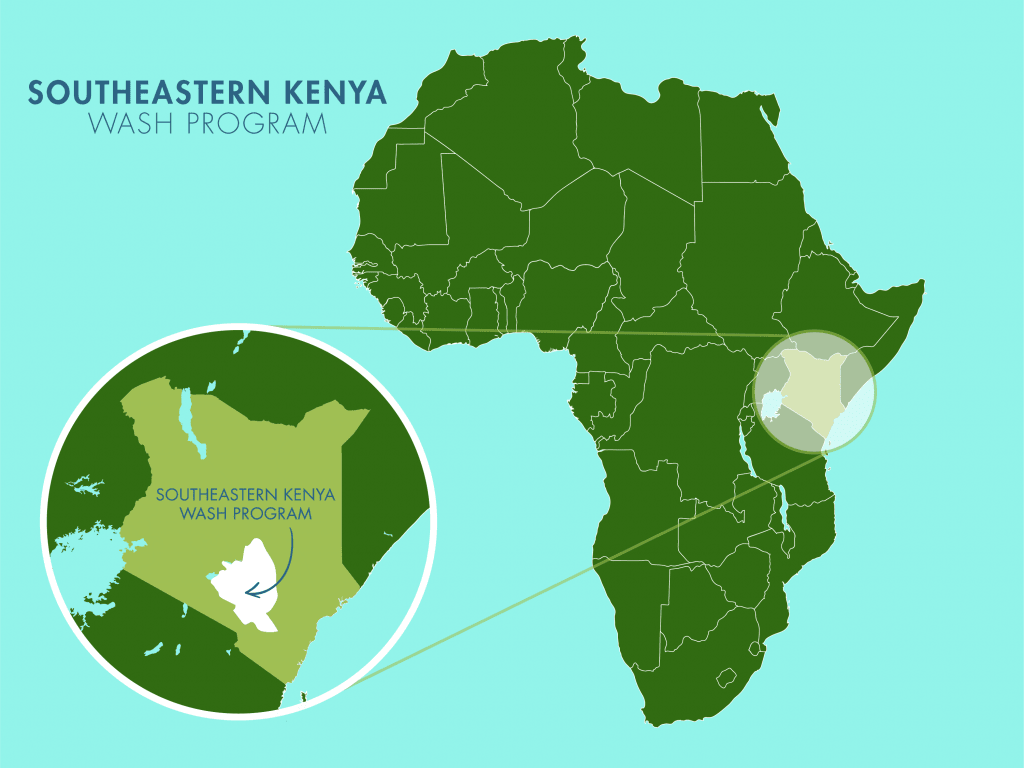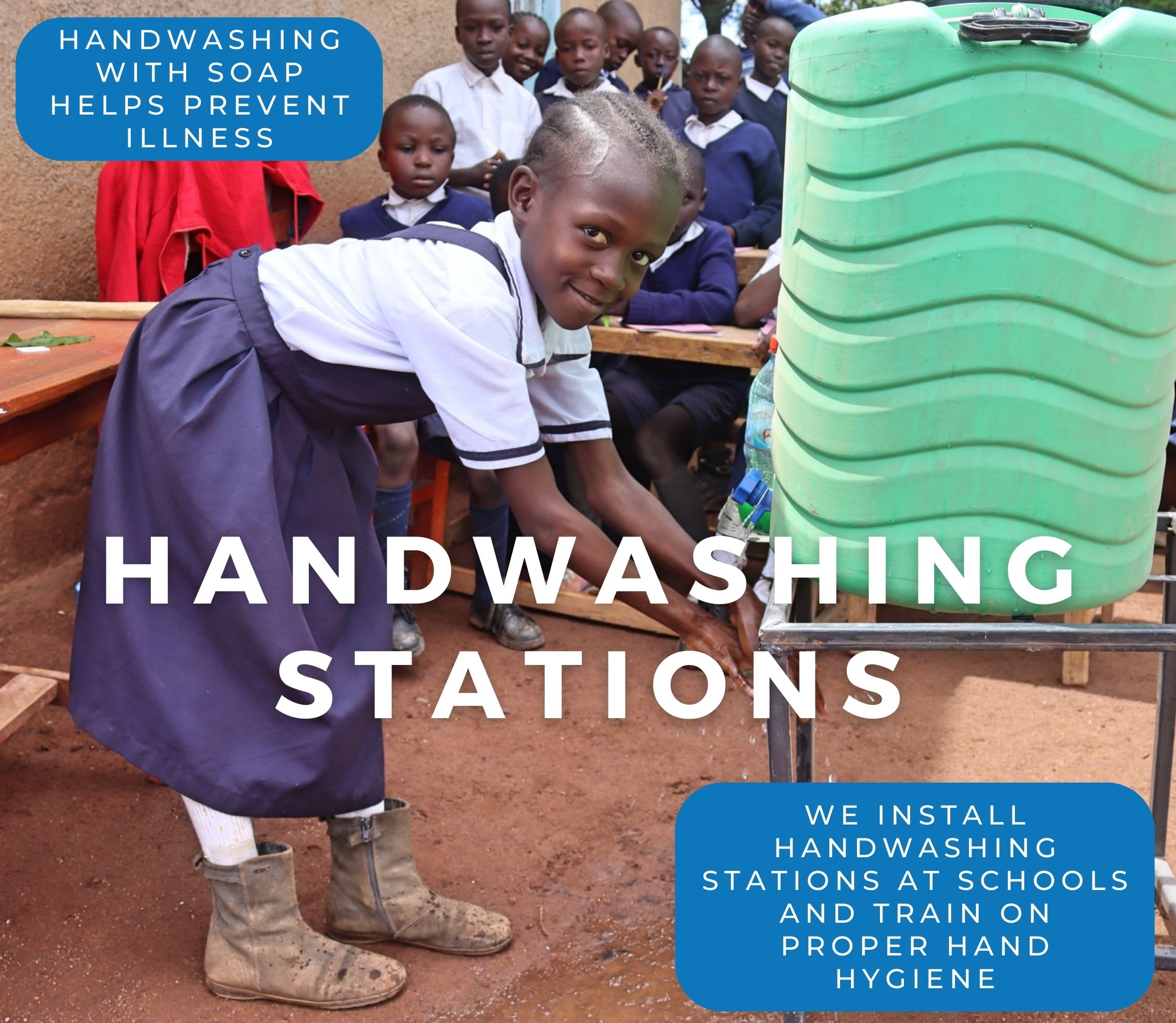Kimu Primary School, home to 263 eager students and 17 dedicated staff, is striving for a brighter future. However, they face a daily water challenge that hampers learning and makes their futures unknown.

The school has two main water sources: a rainwater tank that quickly runs dry during drought periods due to its small size, and a tap connected to the municipal water supply that rarely provides water. More often, when these sources fail, the school must pay for water to be delivered from scoop holes in seasonal rivers by water vendors. This water is unsafe, and it can take up to three hours for them to collect it.

The too small raintank.
The unsafe water impacts students and their learning. Health issues such as headaches, typhoid, and dysentery are common and cause students to miss classes.
Teacher Geoffrey Nyagah, 55, provided further details about the situation.
"We experience little rainfall throughout the year, and our school is located in a semi-arid region. Our small rainwater tank cannot harvest enough downpour to sustain us throughout the drought period. The rainwater stored in the plastic tank quickly runs out after the erratic rains, and we have to depend on the water vendors using donkeys, who mostly draw water from the open scoop holes, which expose pupils to water-related infections."

Mr. Nyagah.
Mr. Nyagah witnesses the devastation that comes from students consuming dirty water.
"It is common to have learners who complain of stomachaches after drinking the water available in the school. Last term, we had quite a number of sick learners who we had to call their parents to come to school and take them home for treatment. These learners had to miss school and had to catch up with their classmates."
Not only do the students suffer physically, but their families also feel the financial impact when they have to pay for medical treatments.
Additionally, the high cost of water means the school relies on families for supplementary payments to help cover the expenses. It is a heavy burden for families to bear, one that threatens to push them into further poverty and endanger students' futures.
"The costly water expenses reduce the school's capacity to purchase more learning materials, and we have to send learners to their parents to remind them about the water payments. This leads to absenteeism and ultimately poor academic performance," reported Mr. Nyagah.

We plan to interrupt the cycle by installing a 104,000-liter rain tank.
The new larger tank will reduce the need to buy water or rely on the unreliable tap. The tank will help store more rainwater during the wet season, allowing the school to have a consistent supply of clean water throughout the year. Access to sufficient water, whenever it is needed, will improve student health, their educational experience, and help the school achieve its development goals, building a brighter future for everyone. And in turn, the families of students will not have their financial resources drained, allowing them to build a brighter future.
Steps Toward a Solution
Schools without reliable, on-premises water access often rely on students to fetch and carry water, leading to rationing and uncertainty about water quality. The water is typically poured into a communal storage tank and used by the entire school. With children carrying water from all different sources, it is also impossible for teachers and staff to know exactly where the water comes from and how safe it is to drink.
A new water point will be located on-premises at the school to ensure accessibility, reliability, and safety for students, teachers, and staff while meeting our school coverage goals. Having water available at the school allows children to drink, wash hands, and use sanitation facilities without leaving school grounds, preventing disruptions to lessons and reducing safety risks. A dedicated source increases water availability, reduces reliance on stored water, minimizes rationing, and ensures confidence in the safety of the water. This means staff and students are healthier, and their lessons aren’t disrupted, contributing to a better education!
Our technical experts worked with the school leadership and the local community to identify the most effective solution to their water crisis. Together, they decided to construct a rainwater harvesting system.
Rainwater Harvesting System
A rainwater collection system consists of gutters that channel rainwater effectively into large holding tanks. Attached to buildings with clean, suitable roofing, these systems are sized according to the population and rainfall patterns. Water can be stored for months, allowing for easy treatment and access. Learn more
Handwashing Stations
Alongside each water source, we install two gravity-fed handwashing stations, enabling everyone at the school to wash their hands. Handwashing is crucial for preventing water-related illnesses within the school and community. Student “health clubs” maintain the stations, fill them with water, and supply them with soap, which we often teach them how to make.
School Education & Ownership
Hygiene and sanitation training are integral to our water projects. Training is tailored to each school's specific needs and includes key topics such as proper water handling, improved hygiene practices, disease transmission prevention, and care of the new water point.
To ensure a lasting impact, we support forming a student health club composed of elected student representatives and a teacher. These clubs promote hygiene practices schoolwide and keep handwashing stations well-stocked. This student-led model encourages a sense of ownership and responsibility.
Safe water and improved hygiene habits foster a healthier future for the entire school.

 Rainwater Catchment
Rainwater Catchment
 Rehabilitation Project
Rehabilitation Project


















